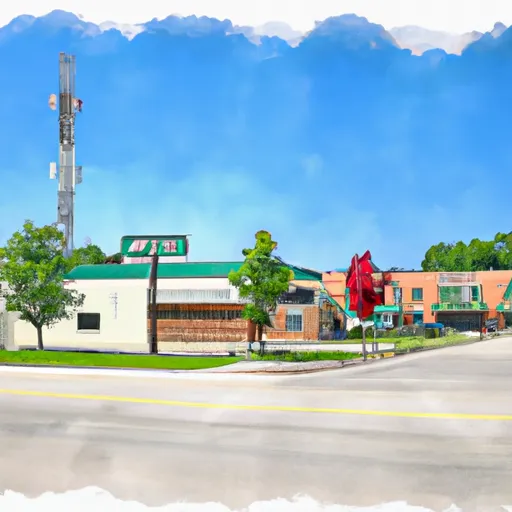-
 Snoflo Premium
Snoflo Premium
Get unlimited access to all our content
With no Ad interruptions! - Start Your Free Trial Login with existing account
Maple-Plain
Eden Index
Climate
6.4
•
Recreation
3.8
•
Community
6.7
•
Safeguard
5.6/10

Maple Plain, Minnesota is a small town located in Hennepin County, west of the Twin Cities. The town has a humid continental climate, characterized by hot summers and cold winters. Average temperatures range from the mid-20s Fahrenheit in winter to the mid-80s in summer. Precipitation is evenly distributed throughout the year, with an annual average of around 30 inches.
The Maple Plain area is abundant in hydrological features, including several lakes and wetlands. Lake Independence and Lake Sarah are popular destinations for fishing, boating, and water sports. These lakes also provide opportunities for birdwatching and wildlife observation.
Outdoor enthusiasts can enjoy a variety of recreational activities in Maple Plain. Baker Park Reserve, operated by Three Rivers Park District, offers extensive trails for hiking, biking, and horseback riding. The reserve also has picnic areas, a campground, and a swimming beach. In winter, residents can enjoy cross-country skiing, snowshoeing, and fat biking on the park's groomed trails.
Overall, Maple Plain provides a diverse range of outdoor activities, making it an attractive destination for nature lovers and outdoor enthusiasts throughout the year.
What is the Eden Index?
The Snoflo Eden Index serves as a comprehensive rating system for regions, evaluating their desirability through a holistic assessment of climate health, outdoor recreation opportunities, and natural disaster risk, acknowledging the profound impact of these factors on livability and well-being.
Climate Health Indicator (CHI): 6.4
Maple-Plain receives approximately
768mm of rain per year,
with humidity levels near 84%
and air temperatures averaging around
7°C.
Maple-Plain has a plant hardyness factor of
4, meaning
plants and agriculture in this region thrive during a short period during spring and early summer. Most
plants will die off during the colder winter months.
By considering the ideal temperature range, reliable water supplies, clean air, and stable seasonal rain or snowpacks, the Climate Health Indicator (CHI) underscores the significance of a healthy climate as the foundation for quality living.
A healthy climate is paramount for ensuring a high quality of life and livability in a region, fostering both physical well-being and environmental harmony. This can be characterized by ideal temperatures, reliable access to water supplies, clean air, and consistent seasonal rain or snowpacks.
Weather Forecast
Streamflow Conditions
Upper Mississippi-Crow-Rum
Area Rivers
Upper Mississippi-Crow-Rum
Snowpack Depths
Upper Mississippi-Crow-Rum
Reservoir Storage Capacity
Upper Mississippi-Crow-Rum
Groundwater Levels
Recreational Opportunity Index (ROI): 3.8
The Recreational Opportunity Index (ROI) recognizes the value of outdoor recreational options, such as parks, hiking trails, camping sites, and fishing spots, while acknowledging that climate plays a pivotal role in ensuring the comfort and consistency of these experiences.
Access to outdoor recreational opportunities, encompassing activities such as parks, hiking, camping, and fishing, is crucial for overall well-being, and the climate plays a pivotal role in enabling and enhancing these experiences, ensuring that individuals can engage in nature-based activities comfortably and consistently.
Camping Areas
| Campground | Campsites | Reservations | Toilets | Showers | Elevation |
|---|---|---|---|---|---|
| Clubhouse | 55 | 1,434 ft | |||
| Pokegama Rec Area | 21 | 1,291 ft | |||
| Mille Lacs Kathio State Park | 70 | 1,281 ft | |||
| Aitkin County Campground | 7 | 1,201 ft | |||
| Ann Lake - Sand Dunes State Forest | 30 | 990 ft | |||
| Riverside City Park - Princeton | None | 956 ft | |||
| Hill Lake City Park | 30 | 1,274 ft | |||
| Big Falls City | None | 1,188 ft | |||
| Itasca County Fairgrounds | None | 1,302 ft | |||
| Father Hennepin State Park | 100 | 1,313 ft |
Nearby Fishing
Nearby Ski Areas
Catastrophe Safeguard Index (CSI):
The Catastrophe Safeguard Index (CSI) recognizes that natural disaster risk, encompassing floods, fires, hurricanes, and tornadoes, can drastically affect safety and the overall appeal of an area.
The level of natural disaster risk in a region significantly affects safety and the overall livability, with climate change amplifying these risks by potentially increasing the frequency and intensity of events like floods, fires, hurricanes, and tornadoes, thereby posing substantial challenges to community resilience and well-being.
Community Resilience Indicator (CRI): 6.7
The Community Resilience Indicator (CRI) recognizes that education, healthcare, and socioeconomics are crucial to the well-being of a region. The CRI acknowledges the profound impact of these elements on residents' overall quality of life. By evaluating educational resources, healthcare accessibility, and economic inclusivity, the index captures the essential aspects that contribute to a thriving community, fostering resident satisfaction, equity, and social cohesion.

